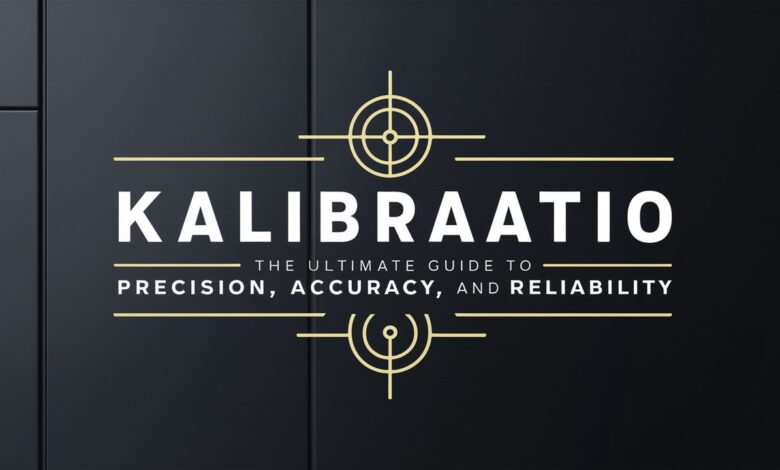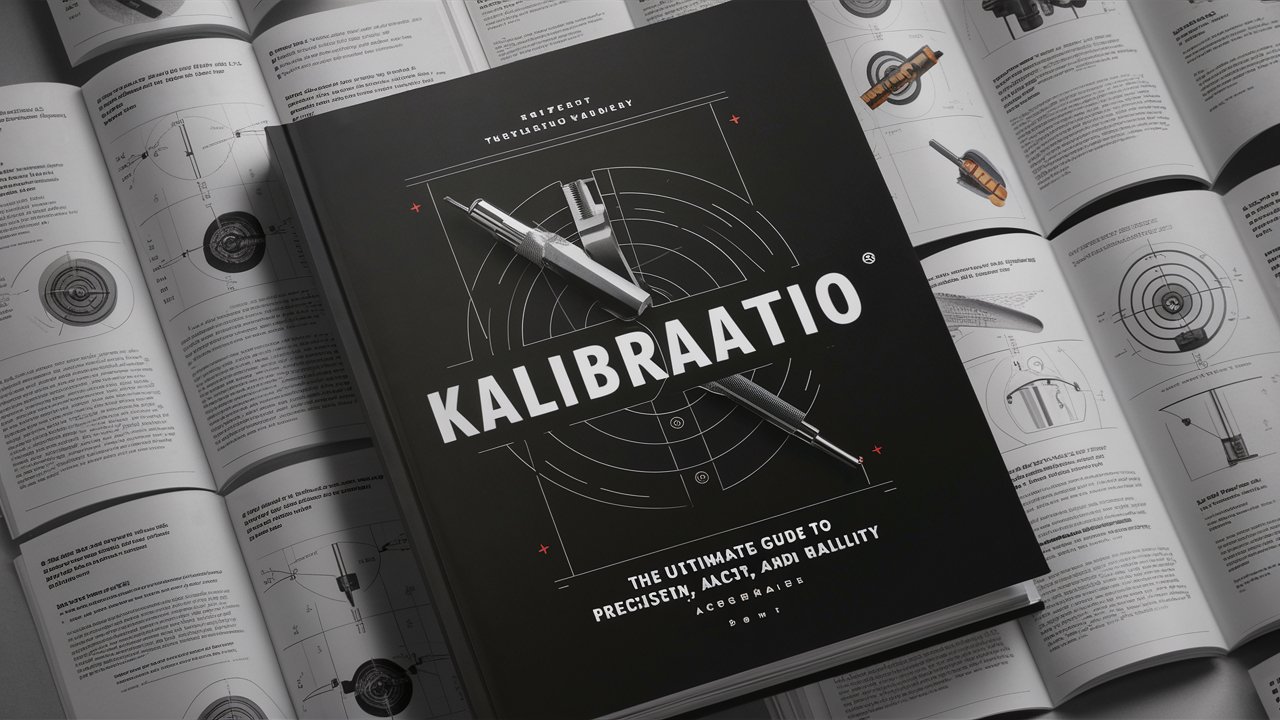Kalibraatio: The Ultimate Guide to Precision, Accuracy, and Reliability

In today’s fast-paced and technologically advanced world, kalibraatio (or calibration) stands as a cornerstone of precision and reliability in every industry. From laboratories and manufacturing plants to aviation and healthcare, calibration ensures that instruments perform within specified limits, delivering accurate and trustworthy results. Without proper calibration, even the most sophisticated equipment can produce misleading data, leading to costly errors and inefficiencies.
In this comprehensive guide, we explore every crucial aspect of kalibraatio — from its meaning and methods to its importance and implementation across various sectors. By mastering calibration, organizations can maintain compliance, improve performance, and ensure operational excellence.
What Is Kalibraatio (Calibration)?
Kalibraatio refers to the systematic process of comparing an instrument’s measurements to a known standard of accuracy. This ensures that the instrument’s readings remain consistent with established benchmarks. During calibration, adjustments may be made to align the device’s output with the standard, minimizing measurement errors and maintaining reliability.
Calibration is not just a one-time process; it’s an ongoing commitment to accuracy, traceability, and quality assurance. The results are documented in a calibration certificate, which verifies that the instrument meets international or industry standards.
The Importance of Kalibraatio in Modern Industries
The significance of kalibraatio cannot be overstated. In sectors where precision is critical — such as pharmaceuticals, engineering, energy, and research — even the slightest deviation can compromise safety, compliance, and performance. Here’s why calibration is indispensable:
-
Accuracy and Consistency: Ensures all instruments produce consistent results, vital for quality control.
-
Regulatory Compliance: Many standards like ISO 9001, ISO/IEC 17025, and GMP mandate routine calibration.
-
Operational Efficiency: Reduces downtime, rework, and waste by maintaining equipment integrity.
-
Risk Management: Minimizes the likelihood of accidents or defects due to faulty measurements.
-
Customer Trust: Demonstrates a commitment to quality, enhancing credibility and confidence.
When organizations integrate calibration into their quality management system, they foster continuous improvement and operational reliability.
Types of Kalibraatio: Understanding the Key Categories
Calibration isn’t a one-size-fits-all process. Depending on the nature of the instrument, there are several types of kalibraatio that cater to different parameters:
1. Mechanical Calibration
Mechanical instruments like micrometers, calipers, and torque wrenches require mechanical calibration to verify dimensional accuracy and mechanical integrity.
2. Electrical Calibration
Used for devices that measure voltage, current, resistance, or frequency. Common in electronics, power systems, and automation industries.
3. Temperature Calibration
Thermometers, thermocouples, and temperature controllers are calibrated to ensure correct readings under varying conditions — crucial in food safety and medical diagnostics.
4. Pressure Calibration
Pressure gauges and transmitters must be calibrated against a reference standard, especially in aerospace, oil & gas, and manufacturing.
5. Flow Calibration
Flow meters used in water treatment, chemical production, and fuel systems rely on calibration to guarantee accurate flow measurement.
Each type plays a critical role in maintaining measurement integrity and operational efficiency.
The Kalibraatio Process: Step-by-Step Approach
To achieve accurate calibration, a systematic approach must be followed. The kalibraatio process typically includes:
-
Preparation – Identifying instruments, understanding specifications, and ensuring environmental conditions are stable.
-
Comparison – Measuring the instrument against a known reference standard traceable to national or international units.
-
Adjustment – If discrepancies are found, adjustments are made to correct the instrument’s readings.
-
Verification – Rechecking to confirm the accuracy post-adjustment.
-
Documentation – Issuing a calibration certificate detailing results, uncertainties, and compliance with standards.
A well-documented calibration process ensures traceability, a key requirement for regulatory audits and certifications.

Kalibraatio Standards and Traceability
Calibration standards ensure uniformity and comparability across measurements worldwide. International organizations like ISO, IEC, and NIST define the benchmarks for calibration. Traceability ensures that each measurement can be linked back to a recognized standard, guaranteeing global consistency.
For example, in ISO/IEC 17025, calibration laboratories must demonstrate that their measurements are traceable to SI units through an unbroken chain of comparisons. This guarantees confidence in data integrity, whether used locally or internationally.
Kalibraatio Frequency: How Often Should You Calibrate?
Determining the calibration frequency depends on various factors:
-
Instrument Usage: Frequently used instruments may require more regular calibration.
-
Environmental Conditions: Harsh or fluctuating conditions can affect instrument stability.
-
Manufacturer Recommendations: Most instruments include a suggested calibration interval.
-
Regulatory Requirements: Some sectors have fixed calibration cycles to maintain compliance.
As a rule of thumb, annual calibration is standard practice, but high-precision instruments may need quarterly or monthly checks.
Kalibraatio in Quality Management Systems (QMS)
Incorporating kalibraatio into a Quality Management System (QMS) is vital for ensuring ongoing compliance and continuous improvement. Standards like ISO 9001 and ISO/IEC 17025 require documented calibration processes, regular verification, and maintenance of records.
A well-structured QMS integrates calibration schedules, alerts, and performance tracking, ensuring that all measuring instruments remain within acceptable tolerances. This proactive approach reduces errors and boosts product quality, consistency, and customer satisfaction.
Digital Kalibraatio: The Future of Calibration
With technological advancements, digital kalibraatio has transformed traditional processes. Modern calibration systems use automation, AI-driven analytics, and IoT connectivity to deliver faster, more accurate results. These systems enhance traceability, reduce human error, and provide real-time insights for predictive maintenance.
Industries are increasingly adopting smart calibration software to streamline workflows, improve data management, and ensure regulatory compliance through digital recordkeeping.
Conclusion
In conclusion, kalibraatio is the foundation of precision, reliability, and trust in every measurement-driven industry. Whether you’re managing laboratory instruments, industrial machinery, or medical devices, regular calibration ensures accuracy, compliance, and performance consistency. By integrating calibration into your operational strategy, you not only meet regulatory requirements but also enhance your reputation for excellence and quality assurance.
A well-calibrated system is a trusted system — and trust is the ultimate measure of success.
Frequently Asked Questions (FAQ)
1. What does kalibraatio mean?
Kalibraatio means calibration — the process of verifying and adjusting instruments to ensure accuracy against a known standard.
2. Why is calibration important?
It ensures precise measurements, compliance with standards, and consistency in performance across instruments.
3. How often should calibration be performed?
Typically once a year, but frequency depends on usage, environment, and industry requirements.
4. Who can perform calibration?
Accredited calibration laboratories or trained professionals following international standards.
5. What is a calibration certificate?
A document confirming that an instrument has been tested, adjusted, and meets specified standards of accuracy.



